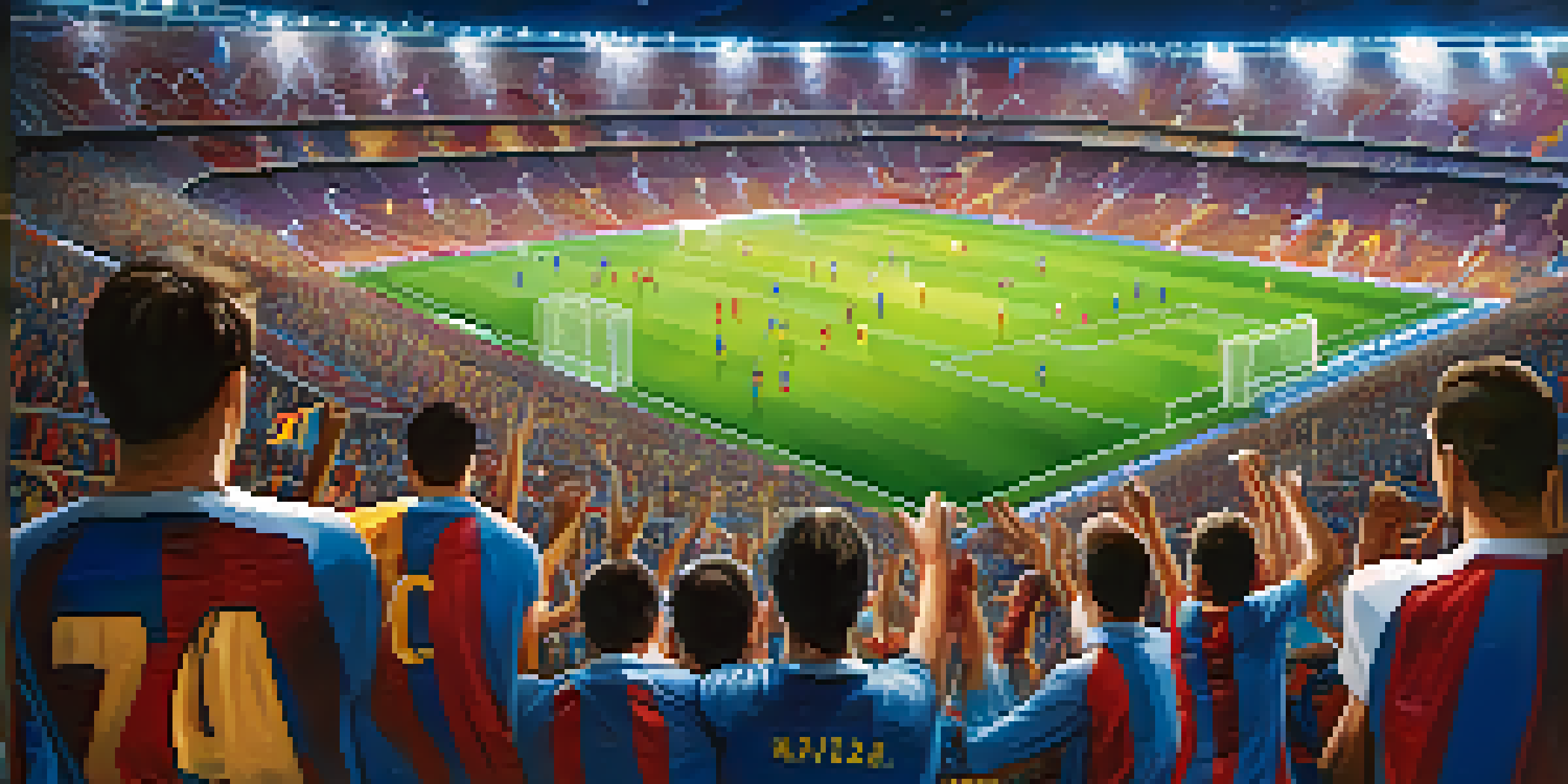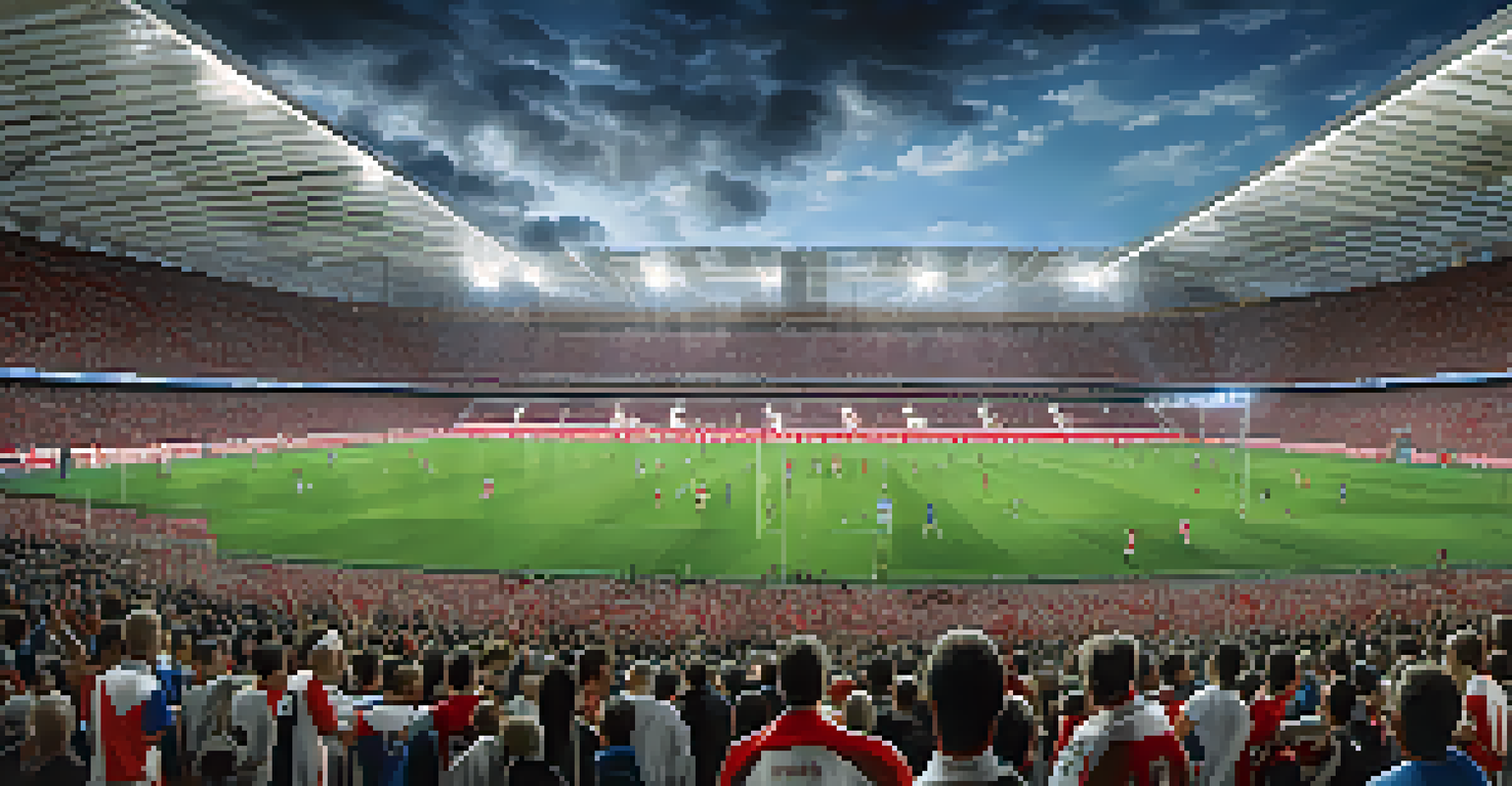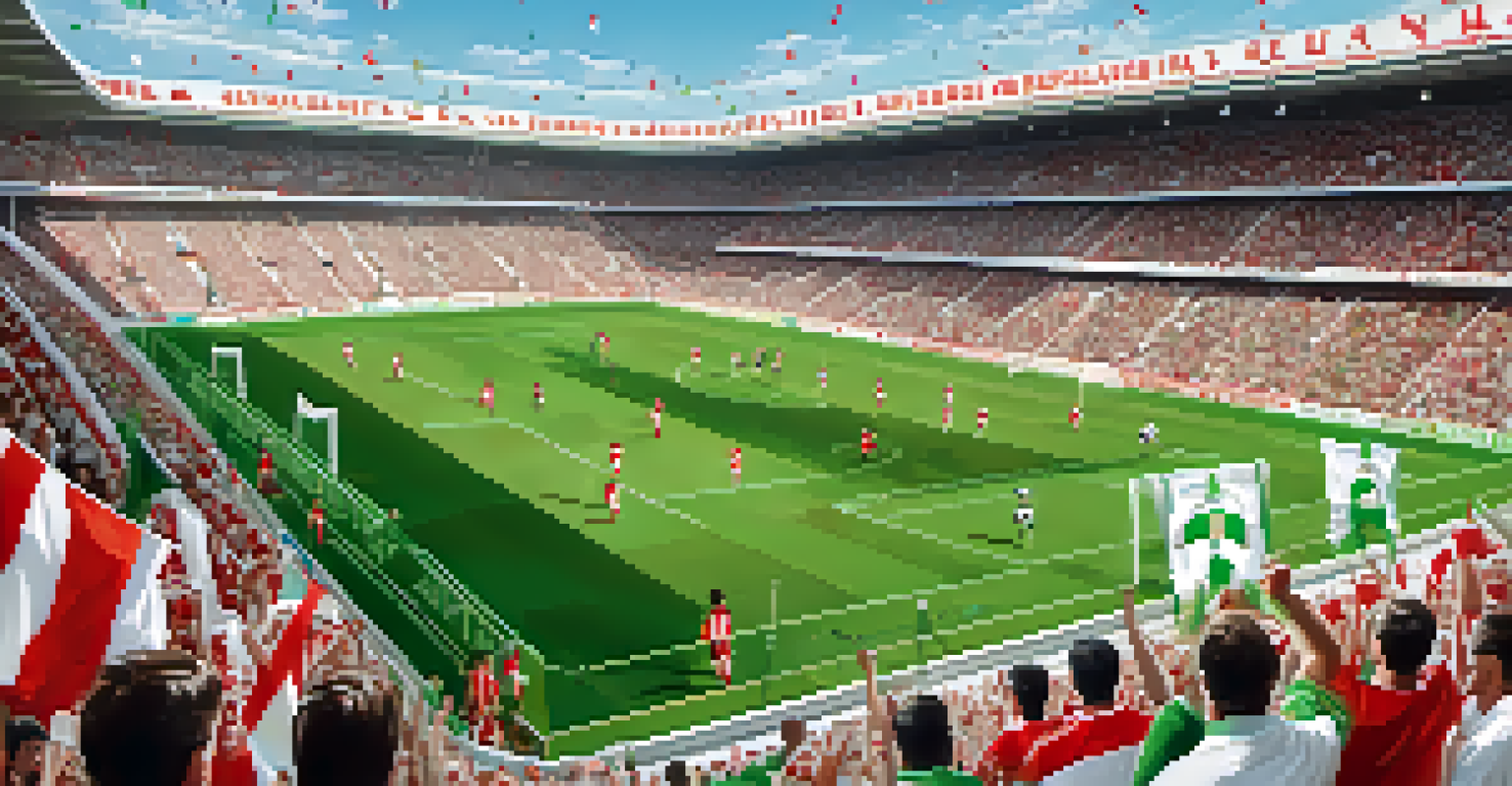Historic Rivalries: The Fierce Competition in Spanish Football

The Birth of Football Rivalries in Spain
Football in Spain began to take shape in the late 19th century, with clubs forming around local communities. This grassroots movement laid the groundwork for the fierce rivalries that would emerge, as clubs began to identify not just with their teams, but with their regional identities. Early matches often reflected local pride, igniting passionate support that would become a hallmark of Spanish football culture.
Football is a game of passion; it’s about the people, the rivalries, and the stories that unfold on and off the pitch.
As clubs like FC Barcelona and Real Madrid started to rise to prominence, the competition intensified. The early matches between these giants were more than just games; they became battles for supremacy and cultural representation. In fact, the clashes between these two teams, known as 'El Clásico,' would soon symbolize the broader societal divisions in Spain, particularly during the tumultuous times of the Spanish Civil War.
These initial rivalries set a precedent for future competitions, as more clubs began to emerge with their own local followings. This growth led to a rich tapestry of rivalries across the country, each steeped in history and fueled by the desire to claim bragging rights. Thus, Spanish football was not just about the game; it became a reflection of the nation's spirit.
El Clásico: More Than Just a Match
When people talk about Spanish football rivalries, they often point to El Clásico as the pinnacle of competition. The matches between FC Barcelona and Real Madrid are steeped in history and rivalry, attracting millions of viewers from around the world. This rivalry transcends sport; it embodies the cultural and political tensions that have existed in Spain for decades.

The intensity of El Clásico can be likened to a high-stakes chess match, where every move is calculated and every decision scrutinized. Fans are not just spectators; they are emotionally invested, often viewing the outcome as a reflection of their own identities. From the passionate chants to the vibrant displays in the stands, the atmosphere is electric and palpable.
Rivalries Reflect Regional Identities
The intense rivalries in Spanish football, such as El Clásico and the Basque Derby, showcase the deep-rooted connections between clubs and their local communities.
Over the years, El Clásico has produced some unforgettable moments and legendary players, further fueling the rivalry. Whether it's a stunning goal or a controversial referee decision, the drama keeps fans talking long after the final whistle. It’s this blend of passion, history, and unpredictability that cements El Clásico as a must-watch event in the sporting calendar.
The Basque Rivalry: Athletic Bilbao vs. Real Sociedad
In the Basque Country, the rivalry between Athletic Bilbao and Real Sociedad, known as the 'Basque Derby,' showcases a different aspect of Spanish football culture. Both clubs have rich histories and a strong connection to their local communities, making their encounters fiercely competitive. Matches between these two teams are often characterized by an intense atmosphere, reflecting the pride of the Basque people.
Rivalry is the heartbeat of football; it brings out the best and worst in teams and fans alike.
The uniqueness of this rivalry lies in the philosophy of Athletic Bilbao, which only fields players of Basque descent. This commitment to regional identity adds another layer to the competition, as fans rally behind their teams with unmatched loyalty. The matches often become a celebration of Basque culture, drawing in not just football fans, but the entire community.
Over the years, the Basque Derby has produced memorable moments, from last-minute goals to dramatic red cards. Each encounter is a battle for not just points, but for regional supremacy, making it a significant event in the Basque football calendar. The passion displayed by both sets of fans highlights the deep-rooted rivalries that exist beyond the pitch.
The Galician Rivalry: Deportivo vs. Celta
In the northwest of Spain, the rivalry between Deportivo de La Coruña and Celta de Vigo, known as the 'Galician Derby,' is another example of fierce competition. These clubs have a long history, and their matches reflect not only sporting rivalry but also regional pride. The passionate support from both sets of fans creates an electric atmosphere that is hard to replicate.
The matches are often filled with drama, showcasing the commitment of players and fans alike. Just like a family feud, the emotions run high, and the stakes feel personal. This rivalry is deeply embedded in the culture of Galicia, with fans treating these matches as a matter of honor.
El Clásico: A Cultural Battleground
El Clásico between FC Barcelona and Real Madrid transcends sport, symbolizing the political and cultural tensions in Spain.
As the clubs battle it out on the pitch, the Galician Derby becomes more than just a football match; it’s a celebration of identity and community. Each goal scored can reignite old rivalries, while moments of triumph can unite fans in shared joy. This makes every encounter a memorable occasion that resonates far beyond the final score.
The Andalusian Rivalry: Sevilla vs. Real Betis
In the vibrant city of Seville, the rivalry between Sevilla FC and Real Betis is one of the fiercest in Spanish football. Known as the 'Seville Derby,' this clash divides the city and its passionate supporters. The rivalry is characterized by its intensity, with fans often creating a lively and hostile atmosphere during matches.
The historical context of this rivalry adds depth to the competition, as both clubs have had periods of success and struggle. The matches are not just about football but also about local pride, as each club represents different social and cultural identities within Seville. This makes every encounter a display of loyalty and passion.
The Seville Derby is known for its dramatic moments, both on and off the pitch. From spectacular goals to fierce tackles, the action is relentless. The vibrant displays from fans, including colorful banners and chants, create an unforgettable atmosphere, solidifying this rivalry as one of the highlights of the Spanish football calendar.
The Catalan Rivalry: Barcelona vs. Espanyol
In Catalonia, the rivalry between FC Barcelona and RCD Espanyol, known as the 'Catalan Derby,' showcases the unique relationship between the two clubs. While Barcelona often dominates in terms of success and global recognition, Espanyol has its own loyal following that passionately supports their team. This dynamic creates a fascinating competition that resonates deeply within the region.
The matches between these two teams are charged with emotion, as Espanyol fans view their club as the underdog fighting against a giant. This narrative adds an extra layer of intensity, with each match representing a battle for local pride. Fans from both sides bring their passion to the stands, creating an unforgettable atmosphere.
Emerging Rivalries Shape Modern Football
As clubs like Atlético Madrid rise to prominence, new rivalries are evolving, enhancing the competitive landscape of Spanish football.
Over the years, the Catalan Derby has produced iconic moments, from stunning goals to memorable celebrations. Each encounter serves as a reminder of the rich football culture in Catalonia, where loyalty and pride run deep. Despite the dominance of Barcelona, the rivalry remains vibrant and fiercely contested.
Emerging Rivalries in Modern Spanish Football
While historic rivalries dominate the landscape of Spanish football, new competitions are emerging as the sport evolves. Clubs like Atlético Madrid have developed intense rivalries with teams like Valencia and Sevilla, adding fresh narratives to the footballing scene. These matches are becoming increasingly significant, often impacting league standings and European qualifications.
The rise of Atlético Madrid has transformed them into a formidable force, challenging the traditional powers in Spanish football. Their matches are marked by a fierce competitive spirit, reflecting the club's dedication to success. Fans are drawn to these fixtures, eager to witness the drama unfold as new rivalries take shape.

As the landscape of Spanish football continues to change, these emerging rivalries will play a crucial role in shaping the future. With each new season, the intensity of competition grows, ensuring that football in Spain remains as passionate and engaging as ever. The evolution of these rivalries is a testament to the enduring spirit of the sport.
The Impact of Rivalries on Spanish Football Culture
Rivalries in Spanish football have a profound impact on the culture surrounding the sport. They foster a sense of community, bringing fans together to celebrate their shared passion. The emotions involved—joy, frustration, and pride—create a unique atmosphere that enhances the experience of attending matches and following teams.
These rivalries also influence the social fabric of Spain, often reflecting deeper societal issues. For example, the fierce competition between Barcelona and Real Madrid is intertwined with political and cultural narratives, making every El Clásico a reflection of more than just football. Fans often carry their team’s colors as badges of honor, reinforcing their identity within society.
Moreover, rivalries contribute to the economic landscape of Spanish football. High-stakes matches draw significant crowds, boosting local economies and increasing visibility for both clubs. As a result, the fierce competition not only enriches the game but also helps sustain the vibrant football culture that thrives across Spain.